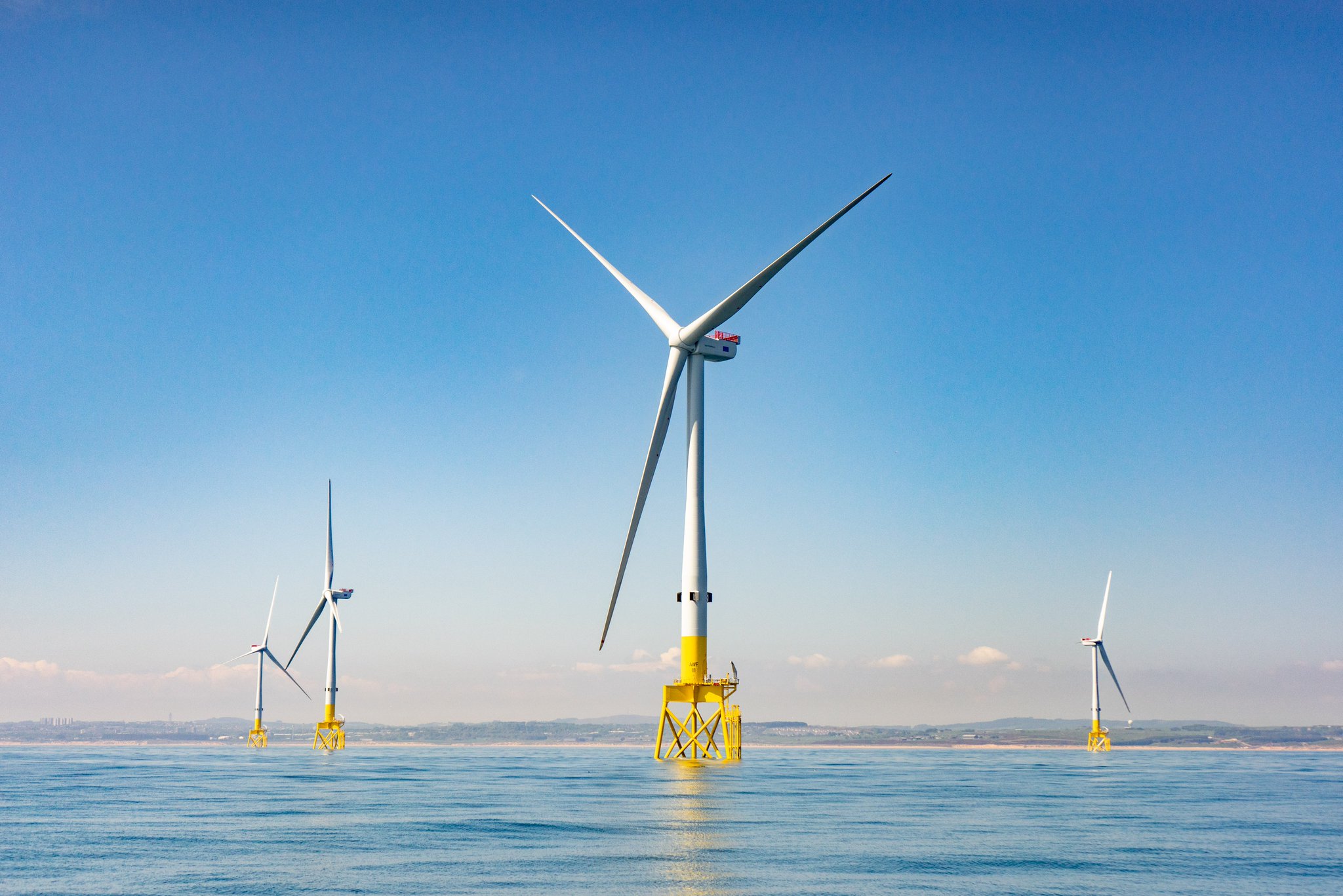
- As the largest country in Southeast Asia with the longest coastline and also the country with 70% of sea coverage, offshore wind farms are one of the renewable energy options that have not been explored in Indonesia.
- Offshore wind energy has not been included in Indonesia’s renewable energy goals as its application is not considered feasible at present, given that the potential area is mainly located in the Indian Ocean, where costs are anticipated to be high due to sea depth.
- Offshore wind power or offshore wind energy is the energy taken from the force of the winds out at sea, transformed into electricity and supplied into the electricity network onshore.
As the largest country in Southeast Asia with the longest coastline and also the country with 70% of sea coverage, offshore wind farms are one of the renewable energy options that have not been explored in Indonesia. Offshore wind energy has not been included in Indonesia’s renewable energy goals as its application is not considered feasible at present, given that the potential area is mainly located in the Indian Ocean, where costs are anticipated to be high due to sea depth.
What is Offshore Wind Turbine?

Offshore wind power or offshore wind energy is the energy taken from the force of the winds out at sea, transformed into electricity and supplied into the electricity network onshore.
Offshore wind power is a constantly renewable and infinite energy source, and the conversion of wind into power creates no harmful greenhouse gas emissions. As we work to tackle climate change and reduce greenhouse gases, offshore wind power will play an essential role in our future electricity generation.
Wind forces turn the blades, which are attached to the nacelle via a hub, and activate a shaft at a low velocity, which turns at the same velocity as the blades. Via a gear box, the velocity is increased up by up to 100 times, causing the main shaft to rotate at more than 1500 times per minute and transmitting this speed to the generator. The generator transforms kinetic energy to electric energy which is channelled downwards within the tower until it reaches the converter, which transforms the direct current into alternating current. The transformer increases the voltage in order to transport all the electricity created across the entire wind farm. The electricity is transported via submarine cables to an electrical substation, where it is converted to high voltage current and carried via the national grid from where it can reach its users.
READ MORE
The Potential of Offshore Wind Turbine in Indonesia

According to the Energy Sector Management Assistance Program (ESMAP), Indonesia is a developing country that has the potential for Offshore Wind Power along with 47 other countries. the following is the data analyzed by ESMAP.
Several areas in Indonesia that have the potential for Offshore Wind Power Indonesia on the map are marked with yellow to red waters with values around 6.5 m/s to 9 m/s. Meanwhile, the color of the green waters on the map shows the wind speed at a value of 4.5 m/s to 5.5 m/s has no potential for Offshore Wind Power, because these speeds do not allow wind turbines to rotate.
These areas in Indonesia are Banten offshore, Sukabumi offshore, Kupang offshore, Wetar Island offshore, and offshore Jeneponto Regency, as well as offshore Tanimbar Islands Regencies and Merauke. This is also reinforced by an analysis of the potential for Offshore Wind Power by the Center for Development and Research on Electricity, New Energy, Renewable Energy, and Environmental Conservation (P3tek KEBTKE).
The two areas highlighted by ESMAP are Kab. Janeponto, Sulawesi and Merauke waters. Both of these areas can be utilized as Offshore Wind Power Plants with a fixed type of wind turbine. Areas suitable for fixed-bed offshore wind technology are areas with water depths of less than 50 meters.
Meanwhile, apart from these two areas, namely off the coast of Banten, off the coast of Sukabumi, off the coast of Kupang, off the coast of Wetar Island, off the coast of the Tanimbar Islands Regency are suitable for this type of floating wind turbine at a certain water depth from 50 to 1,000 meters. Only areas less than 200 kilometers from the coast were included, and all depths were taken from General Bathymetric Chart of the Oceans (GEBCO) data.
READ MORE
With map data from the Global Wind Atlas, its energy potential can be identified. Indonesia has a total potential of 277 GW with details of 198 GW with fixed base turbines and 79 GW with floating wind turbines.
The progress of the construction of Offshore Wind Power Plants or PLTB (Wind Power Plants) for countries that have benefited because of their geographical location close to the north pole so that the wind speed is very high and stable so there is no reason not to take advantage of it.
Indonesia is an area with low pressure, not in the middle and high latitudes which have high wind vapor flows such as in Korea, Japan and the Nordic countries (Denmark, Norway) and Scandinavia. Offshore wind power plants must consider the area and type of waters, wind intensity, and economic analysis also needs to be considered.
Indonesia has an average sea breeze that is included in the “low-moderate” class category. This means that the construction of offshore PLTB in Indonesia has not made significant progress because the majority are still in the form of feasibility studies in several sea areas.
References :
[1] What is offshore wind power?
[3] Wilayah Indonesia yang Berpotensi Terhadap Offshore Wind Power



Comment closed